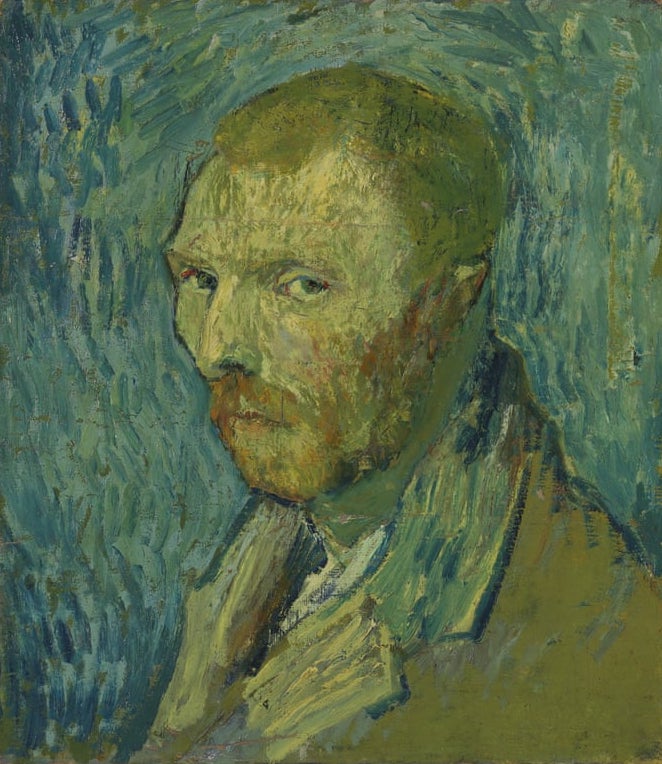Van Gogh's Self-Portraits: 10 Interesting Facts
1. Vincent Van Gogh painted between 35 and 40 self-portraits during his relatively short career as an artist. He did all of them in 1885 through 1889. The only artist who painted more self-portraits was Rembrandt, who created roughly 100 during his career of about 50 years. Only 40 of these were paintings, however.
2. Art historians have speculated about why Van Gogh painted so many self-portraits. They point out that, being poor, the artist couldn't afford to hire actual models. Short of funds but determined nevertheless to hone his skills as a figure painter, Van Gogh became his own best sitter: "I purposely bought a good enough mirror to work from myself, for want of a model."
3. Through his choices of color and backgrounds, each Van Gogh self-portrait reflects the development of Vincent's artistic style. Early dark backgrounds gradually become lighter and more colorful. His neutral clothing brightens as the yellow straw hat and blue jacket appear. The self-portraits he created while living in Arles are rich and vibrant with blue, yellow and red.
4. Art historians assume that masters like Rembrandt and Van Gogh used a mirror to paint their own self-images. However, Vincent did not stick strictly with this practice. In Painter on his Way to Work, a piece that was destroyed in WWII, he paints his own figure from memory.
5. Another Van Gogh self-portrait notable for its departure from the norm is Self-Portrait with Bandaged Ear, (1889). The background includes a colorful woodblock print to the figure's left and an easel behind him to his right. No other self-portrait, except for Painter on his Way to Work (1888), has objects in the background.
6. Two of the self-portraits by Van Gogh show the artist holding a palette and a fistful of brushes, the tools of his trade. Self-Portrait as a Painter, has Van Gogh seated, with his easel to the forefront. It is one of the final Van Gogh's Paris self-portraits.
7. In "Self-Portrait" (1889 at Saint-Remy), the figure clutches his paint-filled palette and brushes in front of him. Perhaps this later work, along with Self-Portrait as a Painter, affirms that the artist achieved his overall goal: to become the artist he strove to be.

8. Vincent Van Gogh was suffering through a psychotic episode at the Saint-Remy asylum when he painted what was probably his last self-portrait, know as "Oslo Self-Portrait". The Self-Portrait has been in Norway's national collection since 1910, but its authenticity has been openly questioned since 1970, until the Van Gogh Museum announced it was "unmistakably" a work by the artist.
9. Van Gogh's self-portraits reveal his personality: Vincent often presented himself as restrained and serious in his self-portraits, with a look of concentration on his face. In Van Gogh's letters to his brother, he wrote:
People say, and I am willing to believe it, that it is hard to know yourself. But it is not easy to paint yourself, either. The portraits painted by Rembrandt are more than a view of nature, they are more like a revelation.
10. Van Gogh gifted Self-Portrait without Beard, also thought to be one of his last, to his mother for her birthday. Later, this painting would become one of the most expensive masterpieces ever sold, commanding a price of $71.5 million in 1998.




















